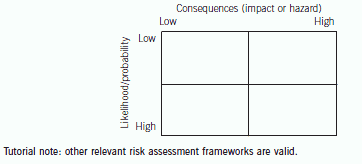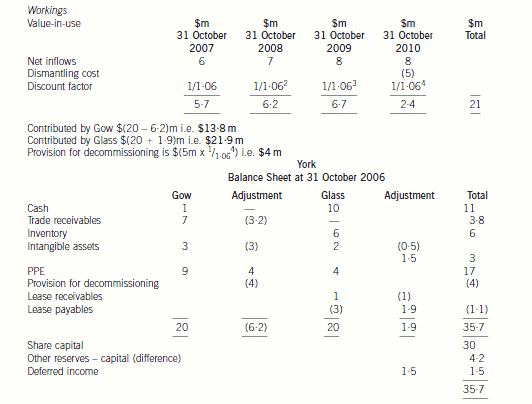2020年湖南ACCA考试准考证打印时间考前两周
发布时间:2020-08-15
不容错过,2020年湖南ACCA考试准考证打印时间,报考的小伙伴都清楚吗?不清楚的话,赶紧跟随51题库考试学习网一起来看看吧,关于湖南ACCA考试准考证打印相关内容。
ACCA考试准考证打印步骤:
(1)ACCA考试学员需登陆www.accaglobal.com
(2)点击MYACCA后登入您的学员号和密码进入
(3)点击左侧栏里EXAM ENTRY&RESULTS进入
(4)点击EXAM ATTENDANCE DOCKET生成页面打印即可
请仔细阅读准考证上EXAMINATION REGULATIONS和EXAMINATION
GUIDELINES,务必严格遵守。ACCA考试学员请仔细核对的考试地点,仔细看准考证上的地址,以免走错考场。
考生特别注意:
在考前两周,可以登陆MYACCA里打印准考证(准考证是学员考试必带的证明,请重视;打印准考证数量须和考试科数相同)。因邮寄的准考证收到时间较晚,建议提前打印好准考证,仔细核对报考科目和考试地点有无错误。
考试注意事项:
1.考前必带证件:身份证、准考证。
考试科目必须与准考证一致,考试中心编号必须与准考证一致,不可以在准考证上乱涂乱写。考场中的每一个桌子上都标有编号,必须确认自己的桌子编号与准考证上的编号相同,如果参加了多科考试,必须注意每一科考试的考场桌子编号的变化,如果没有坐在正确编号的桌子上考试,那么答题册将被宣告无效。
2.考试必备文具:黑色圆珠笔、小尺、铅笔、橡皮、计算器(单功能)、手表等(笔试)。
3.请考试学员尽量提前半小时到场(开考后一个小时后不允许进入考场)。
4.进入考场请仔细听考官所讲的考试规则,以免在考试中出现问题。在监考官宣布考试开始前,请勿打开试卷。请确认所发试卷是否正确。每位学员将会收到:试卷、答题本、机读卡、坐标纸(若有画图题),若有任何问题,请举手示意监考官。
5.规定ACCA考试学员进入考场后,必须把通讯设备及所携带的资料、书包等一并放置在监考官指定的位置并按照准考证上标明的考场及座位号就座。请注意不能携带手机到座位上,即使已经关机也不行。
6.考试正式开始前,必须用黑色圆珠笔填写答题册前面的具体信息:
学员ID和名字
桌子编号
考场编号
考试科目编号和版本
在考试结束前,必须在答题册封皮及答题页上方辨明已答题目的题号。
考生必须确认考试中所有答题册中的详细信息都填写完毕,考试结束后都不会再有多余时间填写以上信息。
以上是关于湖南ACCA考试准考证打印相关内容,小伙伴们都清楚了吗?湖南ACCA考试准考证打印时间是考前两周,报考的小伙伴不要错过了哦。如果大家对于ACCA考试还有别的问题,可以多多关注51题库考试学习网,我们将继续为大家答疑解惑!
下面小编为大家准备了 ACCA考试 的相关考题,供大家学习参考。
(b) Describe a framework to assess the risks to the progress of the Giant Dam Project. Your answer should
include a diagram to represent the framework. (6 marks)
(b) Framework for assessing risk
Risk is assessed by considering each identified risk in terms of two variables:
– its hazard (or consequences or impact) and,
– its probability of happening (or being realised or ‘crystallising’).
The most material risks are those identified as having high impact/hazard and the highest probability of happening. Risks
with low hazard and low probability will have low priority whilst between these two extremes are situations where judgement
is required on how to manage the risk.
In practice, it is difficult to measure both variables with any degree of certainty and so if is often sufficient to consider each
in terms of relative crude metrics such as ‘high/medium/low’ or even ‘high/low’. The framework can be represented as a ‘map’
of two intersecting continuums with each variable being plotted along a continuum.

(b) Prepare the balance sheet of York at 31 October 2006, using International Financial Reporting Standards,
discussing the nature of the accounting treatments selected, the adjustments made and the values placed
on the items in the balance sheet. (20 marks)

Gow’s net assets
IAS36 ‘Impairment of Assets’, sets out the events that might indicate that an asset is impaired. These circumstances include
external events such as the decline in the market value of an asset and internal events such as a reduction in the cash flows
to be generated from an asset or cash generating unit. The loss of the only customer of a cash generating unit (power station)
would be an indication of the possible impairment of the cash generating unit. Therefore, the power station will have to be
impairment tested.
The recoverable amount will have to be determined and compared to the value given to the asset on the setting up of the
joint venture. The recoverable amount is the higher of the cash generating unit’s fair value less costs to sell, and its value-inuse.
The fair value less costs to sell will be $15 million which is the offer for the purchase of the power station ($16 million)
less the costs to sell ($1 million). The value-in-use is the discounted value of the future cash flows expected to arise from the
cash generating unit. The future dismantling costs should be provided for as it has been agreed with the government that it
will be dismantled. The cost should be included in the future cash flows for the purpose of calculating value-in-use and
provided for in the financial statements and the cost added to the property, plant and equipment ($4 million ($5m/1·064)).
The value-in-use based on a discount rate of 6 per cent is $21 million (working). Therefore, the recoverable amount is
$21 million which is higher than the carrying value of the cash generating unit ($20 million) and, therefore, the value of the
cash generating unit is not impaired when compared to the present carrying value of $20 million (value before impairment
test).
Additionally IAS39, ‘Financial Instruments: recognition and measurement’, says that an entity must assess at each balance
sheet date whether a financial asset is impaired. In this case the receivable of $7 million is likely to be impaired as Race is
going into administration. The present value of the estimated future cash flows will be calculated. Normally cash receipts from
trade receivables will not be discounted but because the amounts are not likely to be received for a year then the anticipated
cash payment is 80% of ($5 million × 1/1·06), i.e. $3·8 million. Thus a provision for the impairment of the trade receivables
of $3·2 million should be made. The intangible asset of $3 million would be valueless as the contract has been terminated.
Glass’s Net Assets
The leased property continues to be accounted for as property, plant and equipment and the carrying amount will not be
adjusted. However, the remaining useful life of the property will be revised to reflect the shorter term. Thus the property will
be depreciated at $2 million per annum over the next two years. The change to the depreciation period is applied prospectively
not retrospectively. The lease liability must be assessed under IAS39 in order to determine whether it constitutes a
de-recognition of a financial liability. As the change is a modification of the lease and not an extinguishment, the lease liability
would not be derecognised. The lease liability will be adjusted for the one off payment of $1 million and re-measured to the
present value of the revised future cash flows. That is $0·6 million/1·07 + $0·6 million/(1·07 × 1·07) i.e. $1·1 million. The
adjustment to the lease liability would normally be recognised in profit or loss but in this case it will affect the net capital
contributed by Glass.
The termination cost of the contract cannot be treated as an intangible asset. It is similar to redundancy costs paid to terminate
a contract of employment. It represents compensation for the loss of future income for the agency. Therefore it must be
removed from the balance sheet of York. The recognition criteria for an intangible asset require that there should be probable
future economic benefits flowing to York and the cost can be measured reliably. The latter criterion is met but the first criterion
is not. The cost of gaining future customers is not linked to this compensation.
IAS18 ‘Revenue’ contains a concept of a ‘multiple element’ arrangement. This is a contract which contains two or more
elements which are in substance separate and are separately identifiable. In other words, the two elements can operate
independently from each other. In this case, the contract with the overseas company has two distinct elements. There is a
contract not to supply gas to any other customer in the country and there is a contract to sell gas at fair value to the overseas
company. The contract has not been fulfilled as yet and therefore the payment of $1·5 million should not be taken to profit
or loss in its entirety at the first opportunity. The non supply of gas to customers in that country occurs over the four year
period of the contract and therefore the payment should be recognised over that period. Therefore the amount should be
shown as deferred income and not as a deduction from intangible assets. The revenue on the sale of gas will be recognised
as normal according to IAS18.
There may be an issue over the value of the net assets being contributed. The net assets contributed by Glass amount to
$21·9 million whereas those contributed by Gow only total $13·8 million after taking into account any adjustments required
by IFRS. The joint venturers have equal shareholding in York but no formal written agreements, thus problems may arise ifGlass feels that the contributions to the joint venture are unequal.

(b) (i) Advise Alasdair of the tax implications and relative financial risks attached to the following property
investments:
(1) buy to let residential property;
(2) commercial property; and
(3) shares in a property investment company/unit trust. (9 marks)
(b) (i) Income tax:
Direct investment in residential or commercial property
The income will be taxed under Schedule A for both residential and commercial property investment. Expenses can be
offset against income under the normal trading rules. These will include interest charges incurred in borrowing funds to
acquire the properties. Schedule A losses are restricted to use against future Schedule A profits, with the earliest profits
being relieved first.
When acquiring commercial properties, it may be possible to claim capital allowances on the fixtures and plant held in
the building. In addition, industrial buildings allowances (IBA) may also be available if the property qualifies as an
industrial building.
Capital allowances are not normally available for fixtures and fittings included in a residential property. Instead, a wear
and tear allowance can be claimed if the property is furnished. This is equal to 10% of the rental income after any
tenants cost (for example, council tax) paid by the landlord.
Income tax is levied at the normal tax rates (10/22/40%) as appropriate.
Collective investment (shares in a property investment company/unit trust)
With collective investments, the investor either buys shares (in an investment company) or units (in an equity unit trust).
The income tax treatment of both is the same in that the investor receives dividends. These are taxed at 10% and 32·5%
respectively (for basic and higher rate taxpayers).
Investors are not able to claim income tax relief on either interest costs (of borrowing) or any other expenses.
Capital gains tax (CGT):
The normal rules apply for CGT purposes in all situations. Property investments do not normally qualify for business
rates of taper relief unless they are furnished holiday lets or in certain circumstances, commercial property. Investments
in unit trusts or property investment companies will never qualify for business taper rates.
It is possible to use an individual savings account (ISA) to make collective investments. If this is done, income and
capital gains will be exempt from tax.
Other taxes:
New commercial property is subject to value added tax (VAT) at the standard rate, but new residential property is subject
to VAT at the zero rate. If a commercial building is acquired second hand as an investment, VAT may be payable if a
previous owner has opted to tax the property. If this is the case, VAT at the standard rate will be payable on the purchase
price, and rental charges to tenants will also be subject to VAT, again at the standard rate.
The acquisition of shares is not subject ot VAT.
Stamp duty land tax (SDLT) will be payable broadly on the direct acquisition of any property. The rates vary from 0 to
4% depending on the value of the land and building and its nature (whether residential or non-residential). Stamp duty
is payable at a rate of 0·5% on the acquisition of shares.
Investment risks/benefits
Direct investment
Investing directly in property represents a long term investment, and unless this is the case, investment risks are high.
Substantial initial costs (such as SDLT, VAT and transactions costs) are incurred, and ongoing running costs (such as
letting agents’ fees and vacant periods) can be significant. The investments are illiquid, particularly commercial
properties which can take months to sell.
All types of properties are dependent on a cyclical market, and the values of property investments can vary significantly
as a result. However, residential property has (on a long term basis) proven to be a good hedge against inflation.
Collective investments
The nature of collective investments is that the investor’s risk is reduced by the investment being spread over a large
portfolio as opposed to one or a few properties. In addition, investors can take advantage of the higher levels of liquidity
afforded by such vehicles.
声明:本文内容由互联网用户自发贡献自行上传,本网站不拥有所有权,未作人工编辑处理,也不承担相关法律责任。如果您发现有涉嫌版权的内容,欢迎发送邮件至:contact@51tk.com 进行举报,并提供相关证据,工作人员会在5个工作日内联系你,一经查实,本站将立刻删除涉嫌侵权内容。
- 2020-09-04
- 2020-01-09
- 2020-01-09
- 2020-01-08
- 2020-08-14
- 2020-09-04
- 2020-09-04
- 2020-09-04
- 2020-01-10
- 2020-01-10
- 2020-01-09
- 2021-01-03
- 2020-08-14
- 2020-01-08
- 2020-12-24
- 2021-01-03
- 2020-12-24
- 2020-01-09
- 2020-01-09
- 2020-01-10
- 2020-01-08
- 2020-01-09
- 2020-01-10
- 2020-01-10
- 2020-12-24
- 2020-01-10
- 2020-01-08
- 2020-01-09
- 2020-01-10
- 2020-08-15